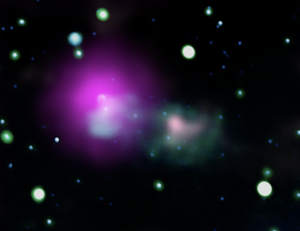Astronomers have long sought the launch sites for some of the highest energy protons in our galaxy. Now, a study using 12 years of data from NASA’s Fermi Gamma-ray Space Telescope (Fermi) confirms that a remnant of a supernova, or star explosion, is just such a place, solving a decade-long cosmic mystery.

Previously, Fermi has shown that the shock waves of exploded stars boost particles to speeds comparable to that of light. Called cosmic rays, these particles mostly take the form of protons, but can include atomic nuclei and electrons. Because they all carry an electric charge, their paths become scrambled as they whisk through our galaxy’s magnetic field, which masks their origins. But when these particles collide with interstellar gas near the supernova remnant (SNR), they produce a telltale glow in gamma rays—the highest-energy light there is.
“Theorists think the highest energy cosmic ray protons in the Milky Way reach a million billion electron volts, or PeV energies,” said Ke Fang, an assistant professor of physics at the Wisconsin IceCube Particle Astrophysics Center (WIPAC), a research center at the University of Wisconsin–Madison. “The precise nature of their sources, which we call PeVatrons, has been difficult to pin down.”
Fang, who led the study, performed the data analysis and developed the theory models. The research team identified a few suspected PeVatrons, including one at the center of our galaxy. Naturally, SNR top the list of candidates. Yet out of about 300 known remnants, only a few have been found to emit gamma rays with sufficiently high energies.